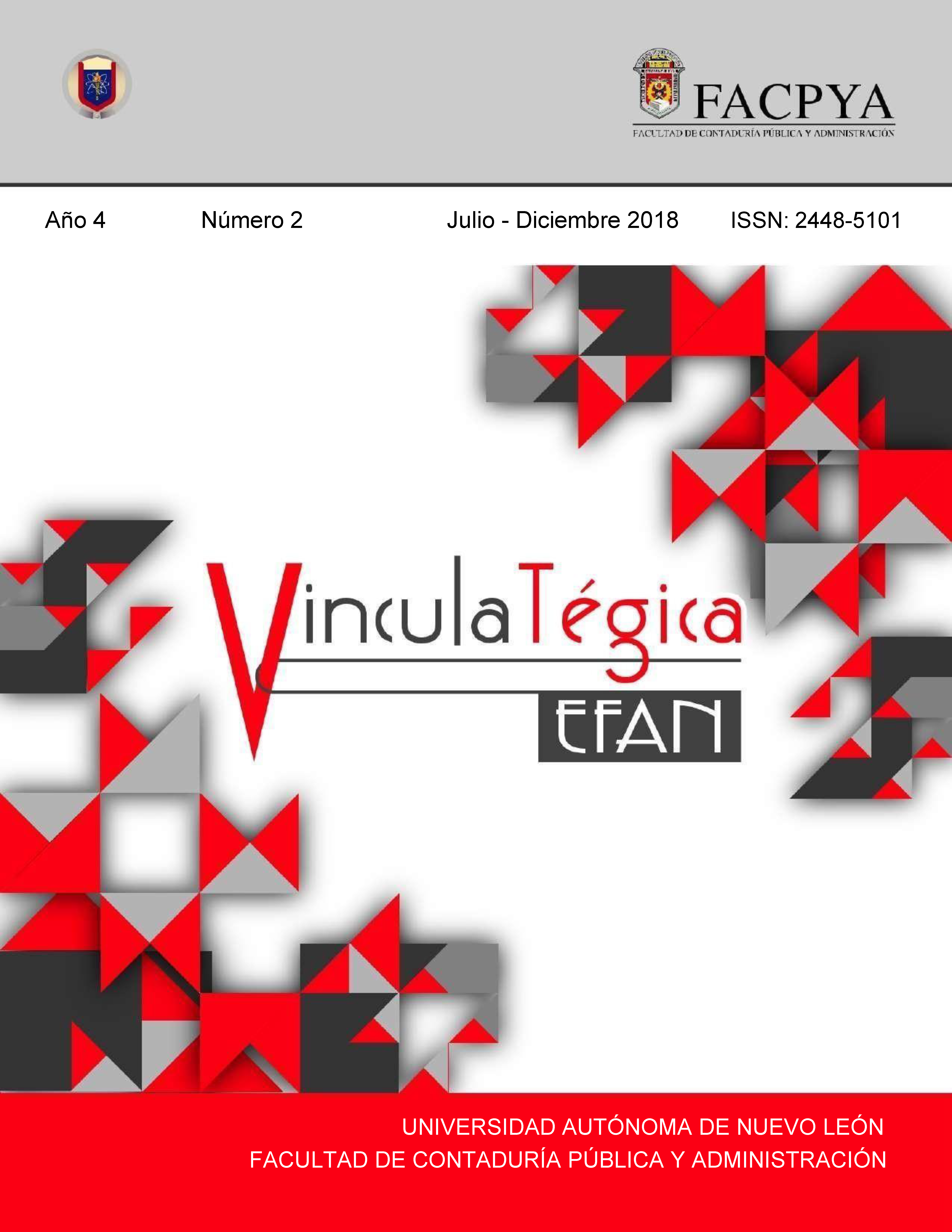Los principales factores que afectan la exitosa implementación de la gestión por competencias de capital humano en las organizaciones
DOI:
https://doi.org/10.29105/vtga4.1-891Keywords:
competencias, gestión, organizaciones, innovación, capital humanoAbstract
The objective of this study is to identify the factors that affect the successful implementation of competency management in organizations, and their impact on the generation and development of innovation in personnel management processes. It is necessary to understand that competences are not a current issue, they have evolved over time, until they become a necessity. There are many benefits provided by a management system of this nature, however it is necessary to know the difficulties that may arise in the adoption process to take necessary measures in its implementation.
Downloads
References
Atkinson, J. W. (1958). Towards experimental analysis of human motivation in terms of motives, expectancies, and incentives. Motives in fantasy, action and society, 288-305.
B.B. Allred, C. Snow, R. Miles. Characteristics of Managerial Careers in the 21st Century. Academy of Management Executive, 10 (4) (1996), 17-27. DOI: https://doi.org/10.5465/ame.1996.3145316
Cabezas, E. (2006). Distintos sistemas formativos en la gestión por competencia laboral
Costumeno, G., & Gil, I. C. (2007). Relaciones en el entorno de trabajo: grado superior. Editorial Paraninfo.
Camejo, A. (2008). The competence-based management model and the performance assessment inhuman resource management. Entelequia. Revista Interdisciplinar No. 8, 97-115.
Davis, K. N. J. (2000). Comportamiento humano en el trabajo. México, ed.
Dent y Goldberg (como se citó en Fernández, E. 2010). Administración de empresas. (1ª Ed). Editorial Para- ninfo España.
Delgado, M., & Domingo, J. (2000). Modelos de gestión por competencias. Fundación Iberoamericana del Conocimiento. En http://www.virtual.unal.edu.co/cursos/economicas/2008551/lecciones/descargas/competencias2.pdf.
Gallego, M. (2000). Gestión humana basada en competencias (II). Procesos de gestión humana basados en competencias. AreaRH. com. En: http://www. arearh. com/rrhh/proce- sosgestionhumana. Html.
García-Cabrera, A. M., Álamo-Vera, F. R., & Hernández, F. G. B. (2011). Antecedentes de la resistencia al cambio: factores individuales y contextuales. Cuadernos de Economía y Dirección de la Empresa, 14(4), 231-246. DOI: https://doi.org/10.1016/j.cede.2011.02.007
García-Sáiz, M. (.-4. (2011). Una revisión constructiva de la gestión por competencias. Anales de Psicología. Ed de Revistas Científicas de América Latina y el Caribe, España y Portugal, 473-497.
Hamel, G. (1991). Competition for competence and interpartner learning within international strategic alliances. Strate- gic management journal, 12(S1), 83-103. DOI: https://doi.org/10.1002/smj.4250120908
Louffat, E. (2005). Convergencia de los Modelos de Conocimiento y de Competencias como soporte para la Moderna Administración de Empresas. Revista Escuela de Administración de Negocios, (53), 24-35.
Mertens, L. (1996). Competencia laboral: sistemas, surgimiento y modelos (No. 04; LC1031, M4.). Montevideo: Cinterfor.
Moreno D., Pelayo Y., Vargas A. (2004). La gestión por competen- cias como herramienta para la dirección estratégica de los recursos humano en la sociedad del conocimiento. Revista de Empresa, 56-72.
Parsons, T. (1949). The structure of social action (vol. 491). New York: Free Press.
Porret, M. (2010). Gestión de personas. Manual para la gestión del capital humano en las organizaciones.
Reyes, J. (1998). Gestión por competencia. Andersen Consulting, España.
Weller, J. (2007). La inserción laboral de los jóvenes: características, tensiones y desafíos. Revista de la CEPAL DOI: https://doi.org/10.18356/80ea6229-es
Downloads
Published
How to Cite
Issue
Section
License

This work is licensed under a Creative Commons Attribution 4.0 International License.
a). Authors keep copyright and give the journal the right of the first publication of the work under a Creative Commons attribution license. This license allows others to share the work as long as original authorship and initial publication in this journal is acknowledged.
b). Authors may make other independent and additional contractual agreements for the non-exclusive distribution of the version of the article published in this journal (e.g., include it in an institutional repository or publish it in a book) as long as they clearly indicate that the work was published for the first time in this journal.







